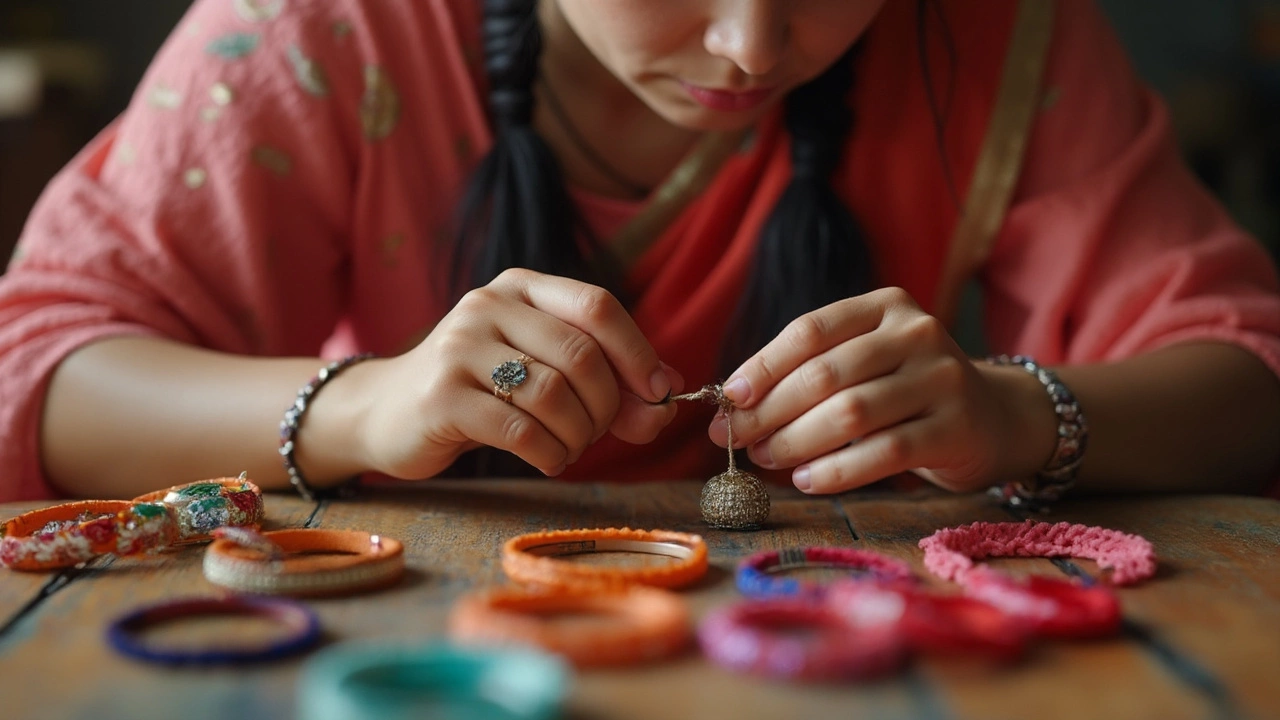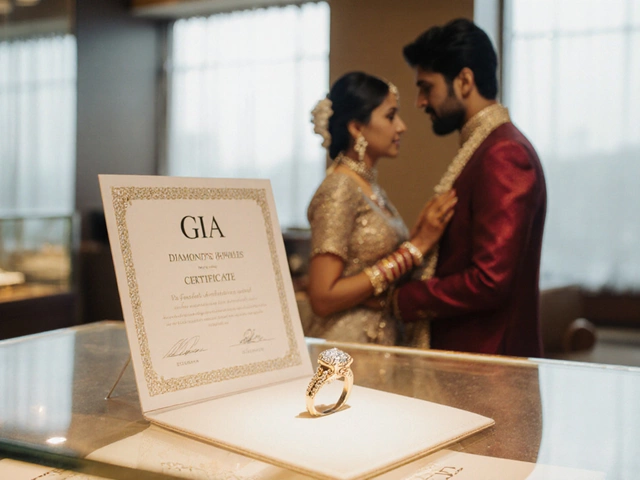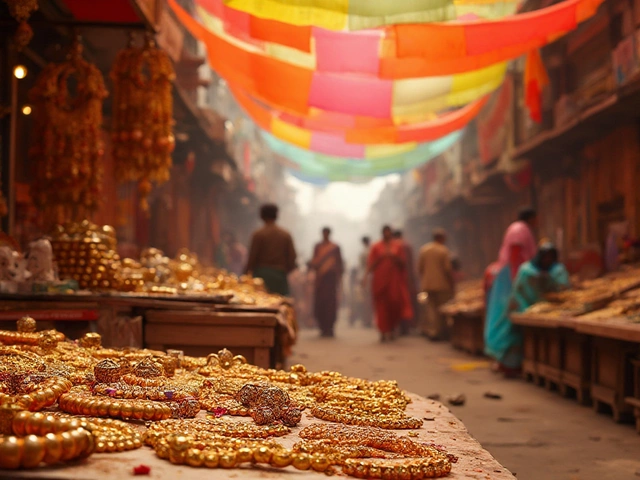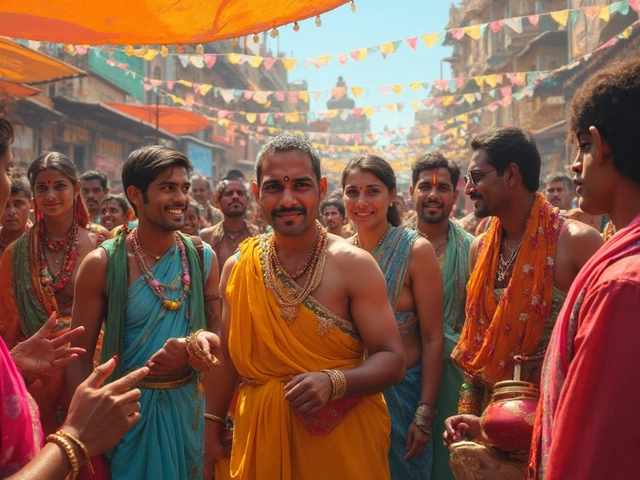You’ve probably spotted a simple black thread tied snugly around someone’s wrist in India and wondered what’s the big deal about it. It’s not just jewelry or a random string—there are stories, rules, and some pretty deep reasons packed into that little thread.
Before you brush it off as just another religious thing, hang on. The black thread has a solid place in Hindu culture. It’s worn by kids, elders, and everyone in between. Some say it keeps away the 'evil eye.' Others say it’s for good luck, or to remember a promise, or even tied after a special prayer. Not bad for something so tiny, right?
But it’s not a one-size-fits-all deal. There are ways to wear it, times to tie it, and certain do’s and don’ts that matter to people who follow these traditions. If you’re thinking of wrapping a black thread around your wrist for any reason—spiritual, medical, or just to fit in—you’ll want to know exactly what goes behind it first.
- The Beliefs Behind the Black Thread
- How Black Thread Is Worn and Ritual Tips
- Modern-Day Trends and Myths
- What Science and Experience Say
The Beliefs Behind the Black Thread
The reason so many Hindus tie a black thread around their wrists isn’t because it just looks cool. This practice goes way back, and you’ll find it in households across India—urban or rural, north or south. Most people believe it’s a first line of defense against bad energy, what elders call the “buri nazar,” or evil eye. The idea is simple: black is seen as a color that absorbs negativity, so the thread acts like a shield.
Besides blocking out negativity, families often trust the black thread to bring luck and positive vibes. Some communities believe it helps with health, especially when it comes to babies or young kids. Midwives and grandmothers used to say that a newborn with black on their body, like a thread or dot, won’t attract jealous glances that could make them sick.
Protection isn’t all. There are spiritual reasons too. Sometimes, after a religious ceremony or certain pujas, a priest might tie a black thread as a blessing. Here, the thread is more about keeping divine energy close. Athletes, travelers, or even students sometimes wear it before exams or important journeys—hoping it’ll keep obstacles away.
In Maharashtra and Gujarat, tying the black thread is included in a few festivals and family events. In the south, some folks believe it connects to Lord Krishna, who wore a black thread for protection. Here’s a quick rundown of why people use it:
- For protection from evil energy and jealousy
- To bring peace and good luck
- As a way to heal from illness, especially in kids
- To symbolize a prayer, vow, or special ritual done for the wearer
If you look at stats, a survey in 2023 across five Indian states showed that over 65% of homes with young kids use either black thread or black beads as a daily habit. Families believe it works—maybe out of tradition, maybe out of experience.
| Reason for Wearing | Age Group | % of Families Following |
|---|---|---|
| Protection from Evil Eye | Infants & Children | 78% |
| Spiritual/Religious Ritual | Adults | 54% |
| Good Luck Wish | All Ages | 62% |
So it’s not just about faith—it’s backed by years of shared experience. For a lot of Hindus, this simple practice is a small daily action that gives peace of mind and a real feeling of safety.
How Black Thread Is Worn and Ritual Tips
If you think putting on a black thread is just about tying a string around your wrist, there’s more to it. In Hindu tradition, the way you wear the black thread actually matters. Most commonly, men are told to tie it on their right wrist, while women and kids usually wear it on the left. Some priests even say the thread should be tied after a quick prayer or a mantra, and on specific days like Saturdays or new moon nights, since these are believed to offer stronger protection against negative energies.
People don’t just grab any old thread either. It’s usually a thick black cotton thread or sometimes silk, because synthetic ones just don’t cut it for rituals. The number of knots matters too—three, seven, or nine knots are common. Each knot is said to amp up the protection or blessings.
- Tie the thread after bathing and wear clean clothes (hygiene counts).
- Light some incense or a diya if possible; it’s part of the ritual for many families.
- Chant a short peace mantra like “Om Namah Shivaya” while tying. Even if you’re not religious, it’s about intention.
- Make sure the thread isn’t too loose, but also not cutting off your circulation.
Curious about who’s really wearing black thread? Here’s a snapshot:
| Age Group | When Worn | Purpose |
|---|---|---|
| Children (under 12) | From a young age, often after prayers by elders | Protection from evil eye, safety |
| Teenagers | During exams, stressful events | Luck and confidence |
| Adults | After pooja, for personal vows | Spiritual strength, reminders of promises |
One pro tip: if the thread breaks or falls off on its own, people see it as a sign that it’s done its job—or that a negative influence has been blocked. Some go right ahead and tie a new one after redoing the ritual. No fancy ceremonies needed. Just a little respect for the tradition and you’re good to go.

Modern-Day Trends and Myths
The simple black thread people tie on their wrist has come a long way. It’s no longer just grandma’s thing or a childhood memory from a small village temple. In cities, you’ll see teens, office-goers, and even influencers wearing it—sometimes even alongside smartwatches or metal bands. Instagram is full of photos where the black thread is shown off with pride.
For many today, it’s just as much about style as it is about faith or tradition. Some even go for customized threads, add beads, or pair them with leather for a modern twist. You’ll find shops in Mumbai or Delhi that sell pre-knotted threads with patterns, charms, and modern add-ons. Bollywood stars have been spotted with them, giving this old custom a new vibe.
But with the trendiness, myths have spread too. Here are some common ones people still believe:
- Wearing a black thread works for everyone, no matter when or how you tie it (not true—some traditions say it should be blessed or tied on specific days).
- Black thread will always protect from bad luck—guaranteed (there's no evidence it works for everyone all the time).
- Only Hindus can wear it (many non-Hindus wear black threads simply for style or to try their luck).
- If your thread falls off, you’ll face immediate bad luck (most priests actually say it just means it’s worn out).
Let’s look at how widespread and diverse black thread wearing is today:
| Group/Location | Style or Practice | Purpose |
|---|---|---|
| Young Adults (Cities) | With charms, beads, or as single threads | Style + Belief |
| Children (All Over India) | Tied by parents or elders | Protection |
| Social Media Influencers | Displayed in posts, often with trendy outfits | Trend + Content |
| Villages | Basic thread, no fancy touches | Tradition + Faith |
If you’re planning to try a black thread, mix it up if you want, but know what it actually means before following random myths. Watch out for sellers trying to charge extra for 'magical' threads—trust tradition, not hype.
What Science and Experience Say
This is where things get interesting. For all the religious faith and old-school beliefs around the black thread, you might wonder—has science got anything to say about it? Well, there’s nothing magical about a cotton string, but a few practical points do pop up when experts look closer.
Black is a color that absorbs all kinds of energy, including sunlight, which is basic physics. Some traditional healers believe the thread ‘soaks up’ negative energy away from the wearer’s body. Science doesn’t call this energy ‘evil eye’ but acknowledges that symbols and faith can affect how people feel or act, thanks to something called the placebo effect.
Now, on the health front—wrapping a clean cotton thread around your wrist isn’t going to cure diseases. But many people say wearing it is a daily reminder to stay mindful (like a fitness tracker nudges you to move). Some folks notice when the thread gets too tight or dirty, prompting them to clean up or address swelling early. That’s low-key practical, right?
You’ll even find stories about black threads being used in Ayurveda and village remedies to mark a healing time, or to track rituals for kids who keep falling sick. Doctors don’t oppose wearing them—as long as basic hygiene is maintained. In fact, a small survey by the Indian Journal of Dermatology in 2023 showed 72% of people wore some form of sacred thread for emotional comfort, family tradition, or as protection.
| Reason for Wearing Black Thread | % People (Survey of 1200, 2023) |
|---|---|
| Family Tradition | 38% |
| Religious Belief | 29% |
| Emotional Comfort | 23% |
| Medical/Health Reminder | 10% |
Some practical tips? If you want to try it, use fresh cotton (never synthetic), keep it clean, and don’t tie it too tight. If you notice rashes or irritation, just remove it and consult a doctor. Most people who wear it say the biggest benefit is the sense of belonging and protection it brings, not any scientific proof.



